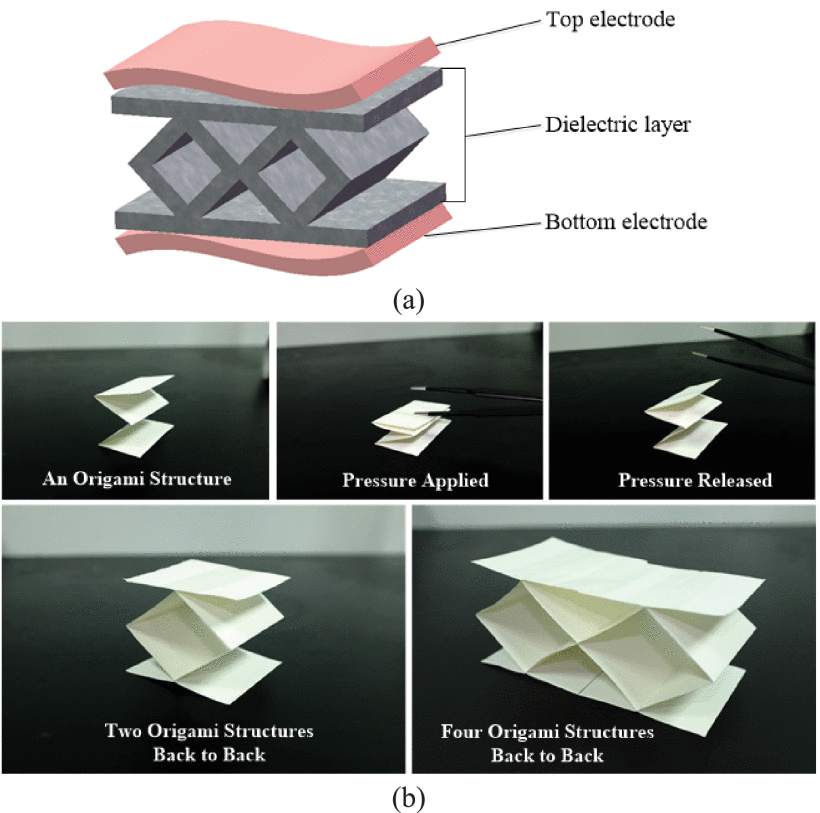Wide-Range Flexible Capacitive Pressure Sensors Based on Origami Structure
The Internet of Things (IoT) has enabled the connectivity of many devices. This ramp-up has been mainly due to the emergence of 5G technology. Biomedical IoT helps the health infrastructure progress through network-connected modern wearable health monitoring devices. One of the most important aspects of Biomedical IoT is the availability of cost-effective and sensitive sensors.
Due to the conformality advantage, the arrival of flexible sensors has boosted the development of biomedical devices. Flexible sensors for biomedical applications are either resistive or capacitive in nature. Unlike capacitive sensors, resistive sensors have limitations due to the additional power consumption, which is a bottleneck in wearable devices.
A capacitive sensor is fabricated with a top electrode, a flexible dielectric layer, and a bottom electrode. The capacitance change is due to two-fold action. First, the distance between the two plates changes when pressure is applied to the sensor. Next, the permittivity of the dielectric layer also changes with applied pressure. Dielectric permittivity is the ability of the material to hold an electrical charge.
A porous dielectric layer is a popular choice of dielectric for a capacitive pressure sensor. The porosity of the dielectric layer improves the sensitivity of the sensor. The high sensitivity and large measurement range help cover a wide range of applications with a single sensor. Porous dielectric-based sensors are challenging to fabricate since it is difficult to control the size and distribution of the pores. This leads to significant sensitivity and measurement range variability across multiple fabricated sensors.
An 'origami' structure-based dielectric layer is incorporated in a one-of-a-kind capacitive pressure sensor as an alternative to the porous dielectric layer. 'Origami' structures have excellent elasticity and mechanical properties making them suitable for flexible sensor applications. When pressure is applied, the flexible origami structure bends down, leading to a change in capacitance. When the pressure is released, the structure immediately bounces back. The sensor is fabricated with four back-to-back origami structures as the dielectric layer. With this structure, when pressure is applied across the plates, the dielectric structure also deforms, inducing a change in permittivity, leading to increased sensitivity.
The dielectric layer is made of a composite polymer called polydimethylsiloxane (PDMS). The fabrication of the sensor involves simple steps in terms of 3D printing, making it cost-effective and mass-producible. First, the PDMS liquid is poured into a 3D-printed mold. Next, a shaping mold is then inserted into the liquid mold. Finally, the two molds are pressed together and put in a drying oven at 40°C for 12 hours. Once the shaping mold is pulled out, an origami back-to-back structural dielectric is obtained. This dielectric is placed between the capacitor's top and bottom plates to realize the flexible sensor.
The testing of the fabricated sensor demonstrated the higher changes in distance between two electrodes leading to an extended measurement range. Further, due to the viscoelasticity, the sensor provides better repeatability. It offers excellent potential in smart wearable monitoring devices and applications in electronic skin for soft robotic systems.




